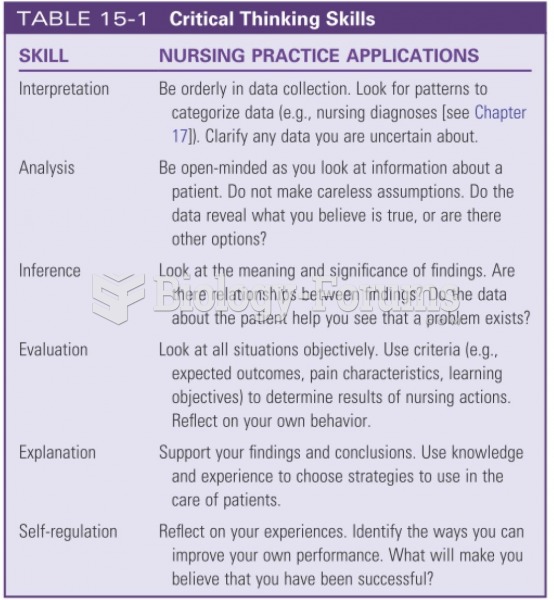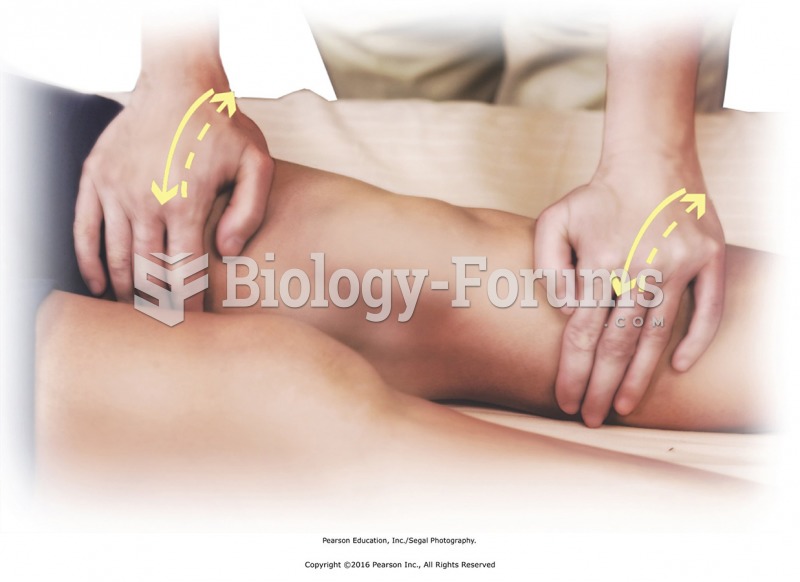|
|
|
In 1864, the first barbiturate (barbituric acid) was synthesized.
The types of cancer that alpha interferons are used to treat include hairy cell leukemia, melanoma, follicular non-Hodgkin's lymphoma, and AIDS-related Kaposi's sarcoma.
IgA antibodies protect body surfaces exposed to outside foreign substances. IgG antibodies are found in all body fluids. IgM antibodies are the first type of antibody made in response to an infection. IgE antibody levels are often high in people with allergies. IgD antibodies are found in tissues lining the abdomen and chest.
Cocaine was isolated in 1860 and first used as a local anesthetic in 1884. Its first clinical use was by Sigmund Freud to wean a patient from morphine addiction. The fictional character Sherlock Holmes was supposed to be addicted to cocaine by injection.
According to the CDC, approximately 31.7% of the U.S. population has high low-density lipoprotein (LDL) or "bad cholesterol" levels.
 In a developmental systems approach, the emergence of social smiling at 6 to 8 weeks of age is not ...
In a developmental systems approach, the emergence of social smiling at 6 to 8 weeks of age is not ...
 Deviancy training is a process by which antisocial peers encourage antisocial talk among friends, ...
Deviancy training is a process by which antisocial peers encourage antisocial talk among friends, ...





